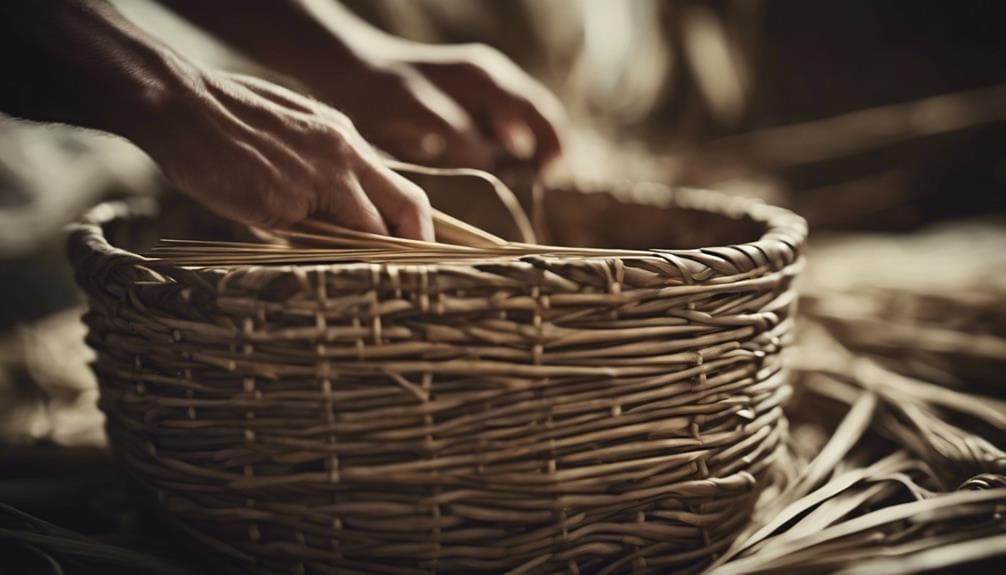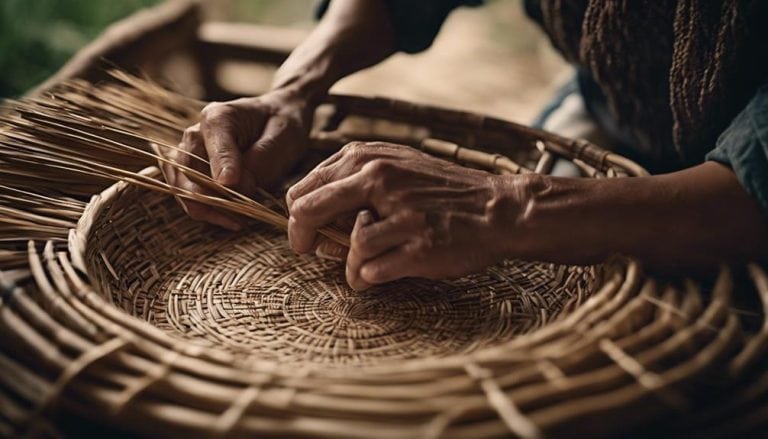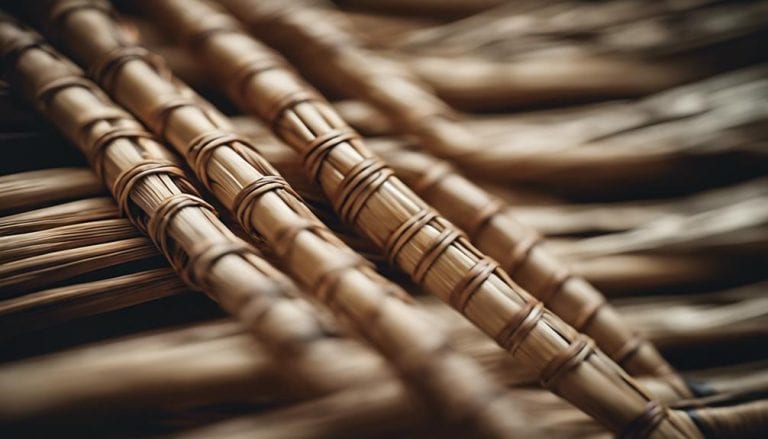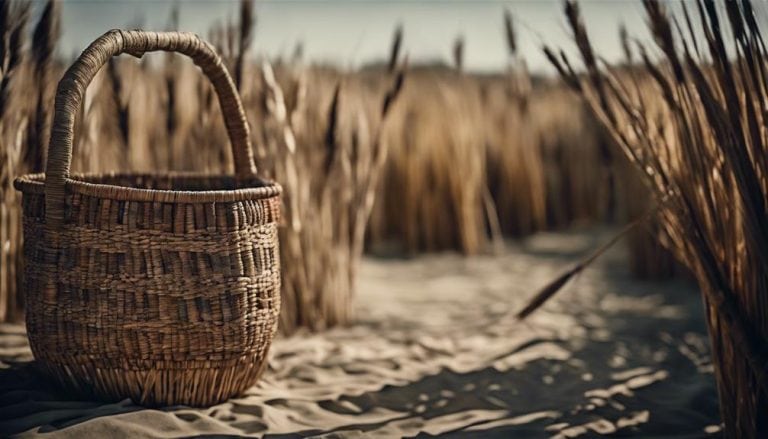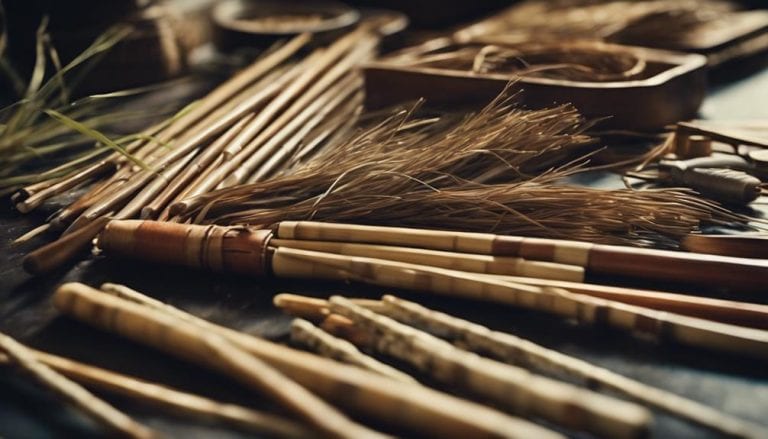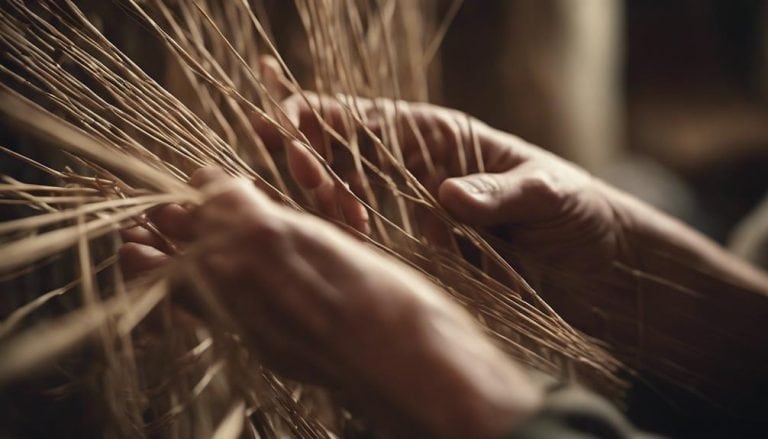The Role of Rush Reeds in Basketry
As a basketry enthusiast, I find the role of rush reeds in crafting captivating. Their pliable nature and potential for intricate weaving make rush reeds a staple in basket making. But what sets rush reeds apart from other materials used in basketry? Stay tuned to discover the hidden qualities of rush reeds that make them essential for creating stunning and functional baskets.
Rush reeds are important materials used in basket weaving, as they provide a strong and flexible base that can withstand pressure from other woven fibers. They also add texture and color to baskets, making them visually appealing.
Key Takeaways
- Rush reeds are vital for intricate basket designs, symbolizing cultural heritage and craftsmanship.
- Their sustainability benefits ecosystems, supporting biodiversity and eco-friendly practices.
- Rush reeds offer versatility in creating sturdy, water-holding baskets with cultural significance.
- They have economic importance, creating jobs, boosting tourism, and showing potential in modern design trends.
History of Rush Reeds in Basketry
Throughout the annals of basketry history, rush reeds have stood as enduring symbols of craftsmanship and cultural significance. The historical significance of rush reeds in basket making is deeply intertwined with their cultural heritage, dating back centuries to ancient civilizations.
These pliable and strong reeds have been essential in creating intricate basket designs and functional containers, making them a preferred material in various cultures worldwide. The versatility of rush reeds allowed traditional basket makers to craft utilitarian and decorative baskets, showcasing the reeds’ practicality and importance in traditional crafts.
The enduring popularity of rush reeds highlights their enduring legacy in basketry, where they have served as a practical material and a cultural symbol passed down through generations. Understanding the history of rush reeds in basket making provides insights into the evolution of craftsmanship and the preservation of cultural heritage in traditional crafts.
Characteristics of Rush Reeds
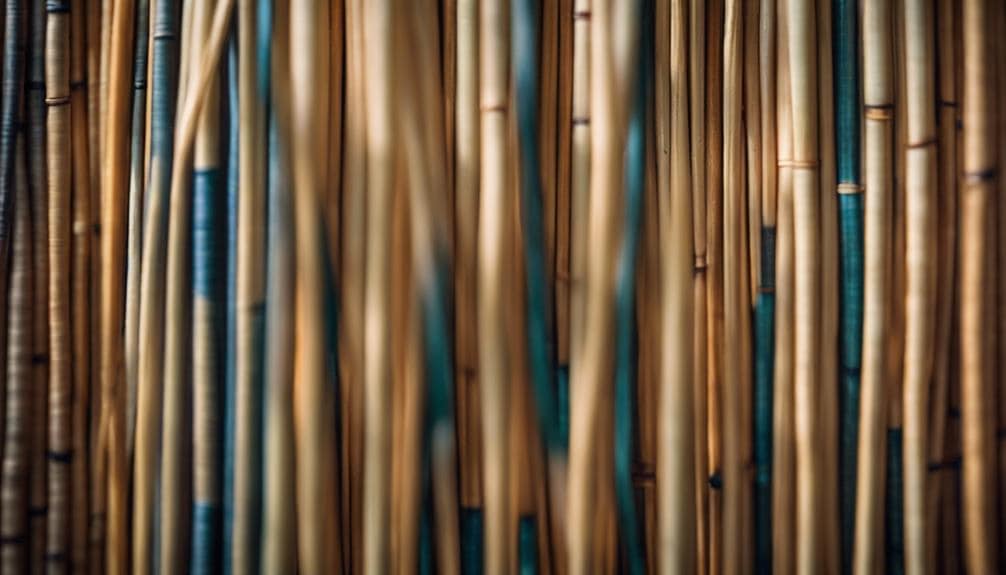
Rush reeds, characterized by their soft, pithy center and long, thin, flexible nature, are commonly utilized in basket weaving for their ease of manipulation and ability to create intricate patterns. These reeds offer a unique combination of flexibility and strength, allowing weavers to bend and shape them into various forms while ensuring the durability of the final product.
The thinness of rush reeds enables weavers to craft intricate designs and weave tight, sturdy baskets that can withstand daily use. The smooth outer surface of rush reeds provides a perfect canvas for dyeing, allowing artisans to add vibrant colors to their creations or leave them natural for a more rustic appeal.
Harvested from wetland areas where they grow densely, rush reeds are a sustainable and readily available resource for basket makers. Their natural strength and resilience make them ideal for constructing baskets that showcase intricate patterns and stand the test of time.
Sustainability of Rush Reeds
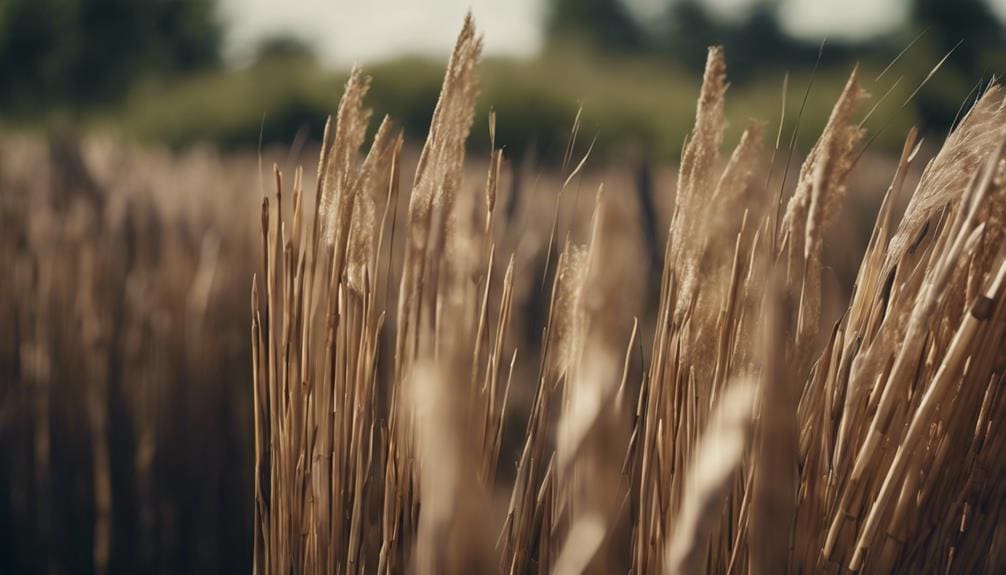
Sustainably harvested from wetland regions, rush reeds serve as a renewable and eco-friendly material for traditional basket weaving practices. As I delve into the sustainability of rush reeds, I find them to offer significant environmental benefits and hold profound cultural significance.
- Environmental benefits: Harvesting rush reeds locally reduces the carbon footprint associated with transportation, supporting ecosystem preservation and biodiversity.
- Artistic expression: The unique properties of rush reeds, such as flexibility and durability, allow artisans to create intricate and visually appealing basketry designs that showcase their artistic talents.
- Cultural significance: Using rush reeds in basket weaving aligns with long-standing artistic traditions, passing down ancestral knowledge and preserving heritage practices.
- Material properties: Rush reeds can be harvested without causing harm to the environment, making them an eco-conscious choice for sustainable basket-making practices.
Incorporating rush reeds into basket weaving promotes sustainable practices and honors the deep-rooted cultural heritage associated with this traditional craft.
Versatility in Basketry Applications
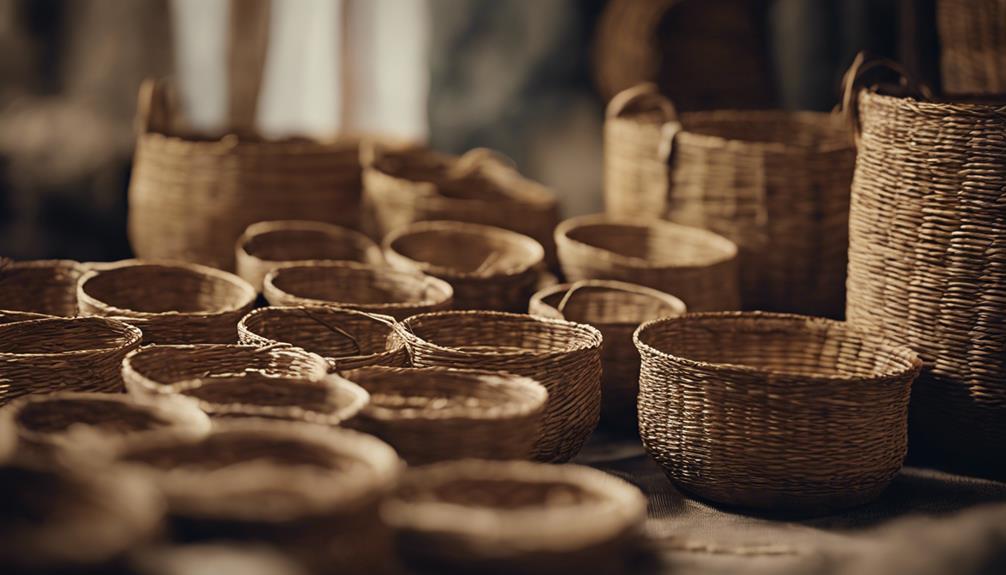
In basketry applications, the adaptability and strength of rush reeds are exemplified through their ability to create sturdy and intricate baskets. These reeds can be tightly woven to craft water-holding baskets, perfectly suited for cooking or storing liquids.
Their functional durability shines through as rush reeds can withstand the demands of daily use. Furthermore, manipulating rush reeds allows for creating baskets of various shapes and sizes, showcasing their versatility in basket making.
The creative patterns achieved with rush reeds add an artistic flair to these baskets’ practicality, making them functional and visually appealing. The cultural significance of rush reeds in basket making highlights their enduring popularity and importance in traditional crafts, further solidifying their value in different cultures.
Techniques for Working With Rush Reeds
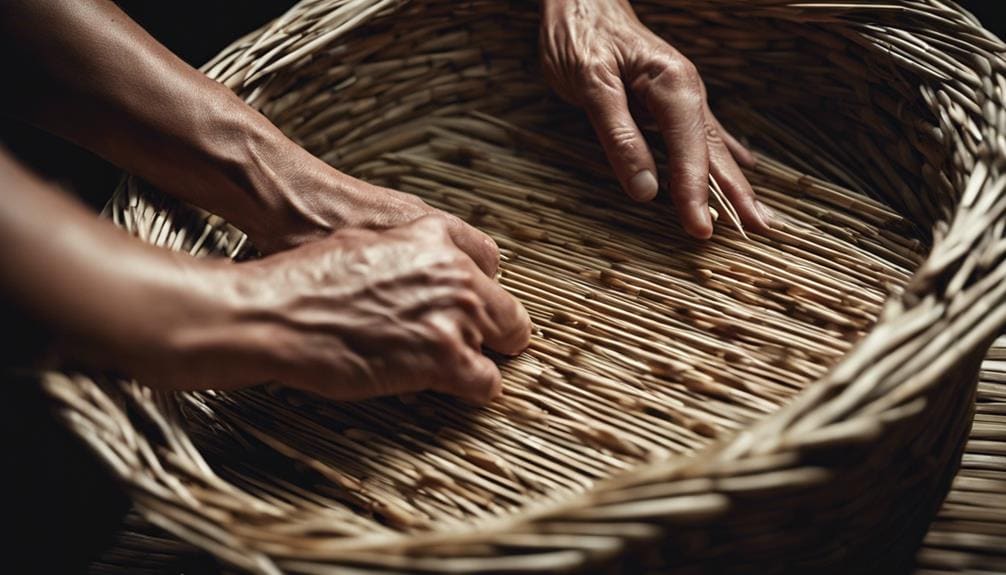
Precise cutting techniques at the base with scissors ensures that rush reeds are harvested uniformly for optimal use in intricate basket weaving.
- Sorting rush reeds by length and thickness is crucial for creating intricate basketry patterns like crosses or geometric motifs.
- Weaving rush reeds tightly and uniformly is essential to guarantee the final basket’s durability and strength, preventing unraveling or structural weaknesses.
- Attention to detail and precision are paramount when working with rush reeds, as small variations can significantly impact the final product’s shape and functionality.
- Proper drying techniques play a vital role in maintaining the integrity of rush reeds and preventing issues like mold or decay in the finished basket.
Design Inspiration From Rush Reeds
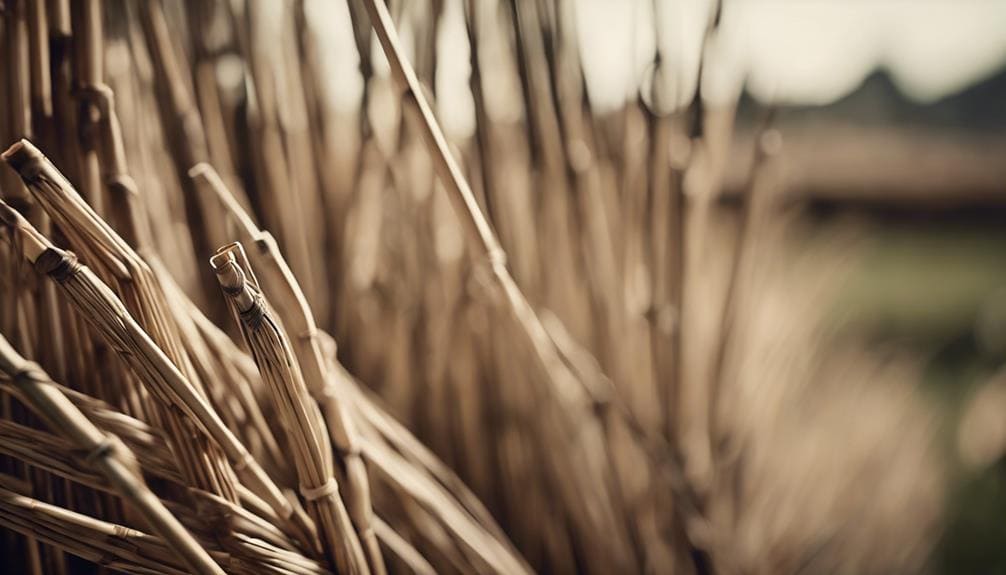
The intricate weaving patterns inspired by the unique texture and flexibility of rush reeds in basket designs showcase the artistry and creativity of basket makers. When exploring design inspiration from rush reeds, one cannot overlook the influence of their natural color palette. The earthy tones of rush reeds, ranging from deep browns to light greens, offer a harmonious selection for creating visually pleasing contrasts and complements within a basket.
Moreover, the textural contrast provided by Rush Reed adds depth and dimension to the overall design. The interplay between the smooth, cylindrical reeds and the intricate weaving techniques results in a tactile experience that appeals to both the visual and tactile senses. Drawing from rush reeds’ organic shapes and growth patterns, basket makers infuse their designs with natural beauty and authenticity.
By incorporating these elements, baskets serve functional purposes and stand as artistic representations of the environment from which rush reeds originate. The versatility of rush reeds allows for the exploration of diverse design motifs, from traditional cultural patterns to more contemporary styles, ensuring that the legacy of rush reeds in basketry continues to evolve with each unique creation.
Future Prospects for Rush Reeds
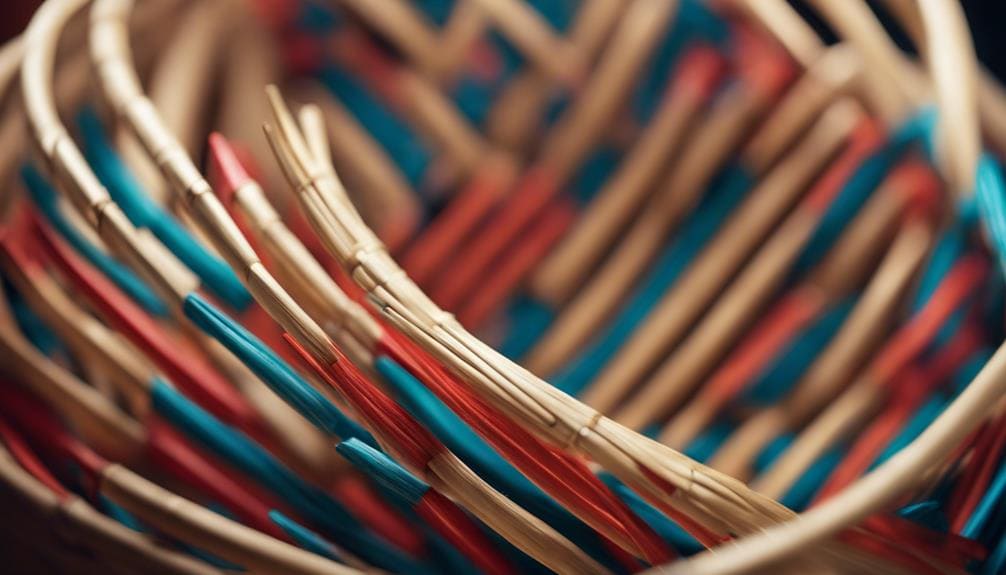
Exploring the prospects for rush reeds reveals promising opportunities for sustainable innovation in basket making. As we delve into the horizon of possibilities, it becomes evident that rush reeds hold immense potential for revolutionizing the basketry industry. Here are some observations to consider:
- Innovative Uses: Continually exploring rush reeds as a versatile material opens doors to innovative applications beyond traditional basket weaving. From furniture design to architectural elements, rush reeds show promise in various creative fields.
- Market Potential: The growing demand for eco-friendly and culturally significant products presents a vast market potential for rush reeds. By tapping into this market, artisans and businesses can cater to the needs of a conscious consumer base.
- Cultural Preservation: Incorporating rush reeds into modern designs adds a touch of tradition and aids in preserving cultural heritage. This fusion of old and new creates products with deeper stories and connections.
- Sustainability: With a focus on sustainable practices, rush reeds promote environmental consciousness and encourage a shift towards more eco-conscious production methods.
Frequently Asked Questions
What Can You Make Out of Rushes?
I make beautiful rush decorations for home decor. Rush weaving is a passion of mine; it’s perfect for DIY projects. Rushes are versatile and sustainable, making them ideal for crafting unique pieces that add charm to any space.
How Do You Harvest Rushes for Weaving?
I gather rushes by cutting at the base with care for a clean cut. Methods prioritize sustainability by selecting lengths and thicknesses for weaving projects. Techniques ensure environmental impact is minimal. Sorting is key for uniform weaves.
What Reeds Are Used in Basketry?
Various reeds like sweetgrass, cattails, bulrushes, and seagrass are utilized in basketry for their unique qualities. Rushes contribute to weaving techniques with their pliability and durability. They hold environmental importance and carry cultural significance in traditional crafts.
What Are Rush Baskets Made Of?
Rush baskets are crafted using green or dried rushes, known for their flexibility and strength. These natural materials allow for sustainable craftsmanship, creating eco-friendly designs. Rush weaving techniques showcase the beauty and durability of rush baskets.
Conclusion
In conclusion, rush reeds are the backbone of basketry, much like how a sturdy spine supports the body. Their historical significance, unique characteristics, and versatility in crafting make them invaluable materials for artisans worldwide. As sustainable resources, rush reeds continue to inspire innovative basket-making designs and techniques, ensuring a bright future for this ancient craft.

